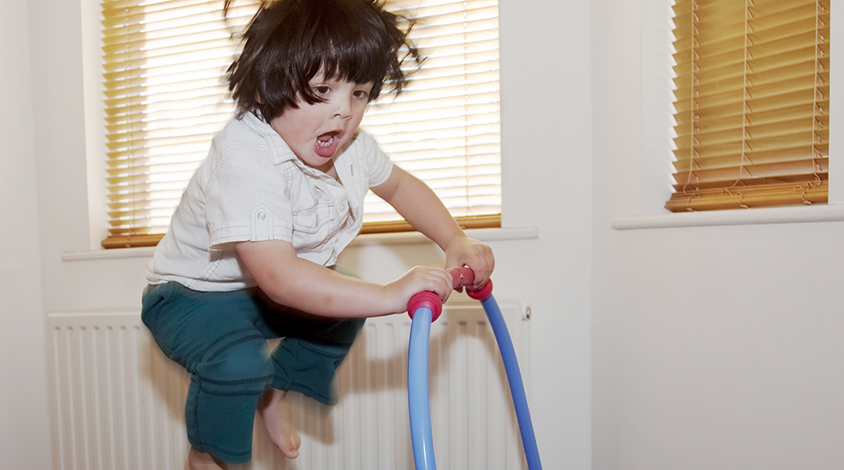
Many children with autism get significantly smarter over time
Between the ages of 2 and 8, intelligence increases in half of children with autism. In some of these children, intellectual disability gives way to average intelligence.
Editor’s Note
This article was originally published 13 May 2017, based on preliminary data presented at the 2017 International Meeting for Autism Research in San Francisco, California. We have updated the article following publication of the study 27 October in Autism Research1. Updates appear below in brackets.
Between the ages of 2 and 8, intelligence increases in half of children with autism. In some of these children, intellectual disability gives way to average intelligence.
The findings suggest that intelligence quotient (IQ) is not stable in young children with autism. It tends to stabilize in typical children by around age 5.
“This tells us that you can’t be too hasty in diagnosing intellectual disability, because you just don’t know what’s going to happen,” says Marjorie Solomon, professor at the University of California, Davis, MIND Institute. Solomon presented the unpublished results today at the 2017 International Meeting for Autism Research in San Francisco, California.
The results run counter to some previous work. In a 2013 study, researchers found that IQ remained steady among people with autism from the time they were diagnosed in childhood until their 40s.
Solomon and her colleagues analyzed data from the Autism Phenome Project, a long-term study of children diagnosed with autism. They looked at IQ scores for 102 children, 20 of them girls, when they were 2 or 3 years old and again when the children were 6 to 8.
They identified four groups of children based on how their IQs changed over that period. The ‘high challenges’ group started with IQs around 44, which dropped slightly to 36; the [‘stable-low’] group started with slightly higher IQs (around 62), which remained stable.
The two other groups showed IQ increases: The ‘lesser challenges’ group started with average IQs that ticked up over time to scores averaging 111, and the ‘changers’ group started with IQs below 70 that increased significantly over time.
Tracking trajectories:
About 27 percent of children fell into the ‘high challenges’ group; another 18 percent were in the [‘stable-low’] group; and roughly 22 percent of children were in the ‘lesser challenges’ group.
The largest fraction of children — 33 percent — made up the ‘changers.’ Their average IQ started at 65 and rose to 99.
“We really think it’s important to understand the differences, both biological and in terms of treatment experience and other characteristics, that differentiate” these subgroups, says Solomon.
The groups showed different patterns of change on measures of communication skills and autism severity. They also scored differently on measures of internalizing behaviors, such as anxiety, and externalizing behaviors, such as hyperactivity.
‘Changers’ showed the greatest gains in verbal ability over time, whereas children in the ‘lesser challenges’ showed the greatest improvement in autism severity — some of them to such a degree that they lost their autism diagnoses, Solomon says. All four groups showed fewer internalizing and externalizing behaviors over time.
“We think this is kind of a positive message for families because over half of individuals are seeing big IQ gains over time,” Solomon says, and “all are seeing internalizing and externalizing behaviors drop off.”
[Low-income and rural children were not adequately represented in the Northern California-based sample, however, so it is unclear whether these gains reflect a national trend.]
The researchers plan to follow the children into middle school and study the relationship between their IQ scores and brain imaging data.
For more reports from the 2017 International Meeting for Autism Research, please click here.
References:
- Solomon M. et al. Autism Res. 11, 121-132 (2017) PubMed
Recommended reading

Glutamate receptors, mRNA transcripts and SYNGAP1; and more

Among brain changes studied in autism, spotlight shifts to subcortex
Explore more from The Transmitter

AI-assisted coding: 10 simple rules to maintain scientific rigor

Frameshift: Shari Wiseman reflects on her pivot from science to publishing

